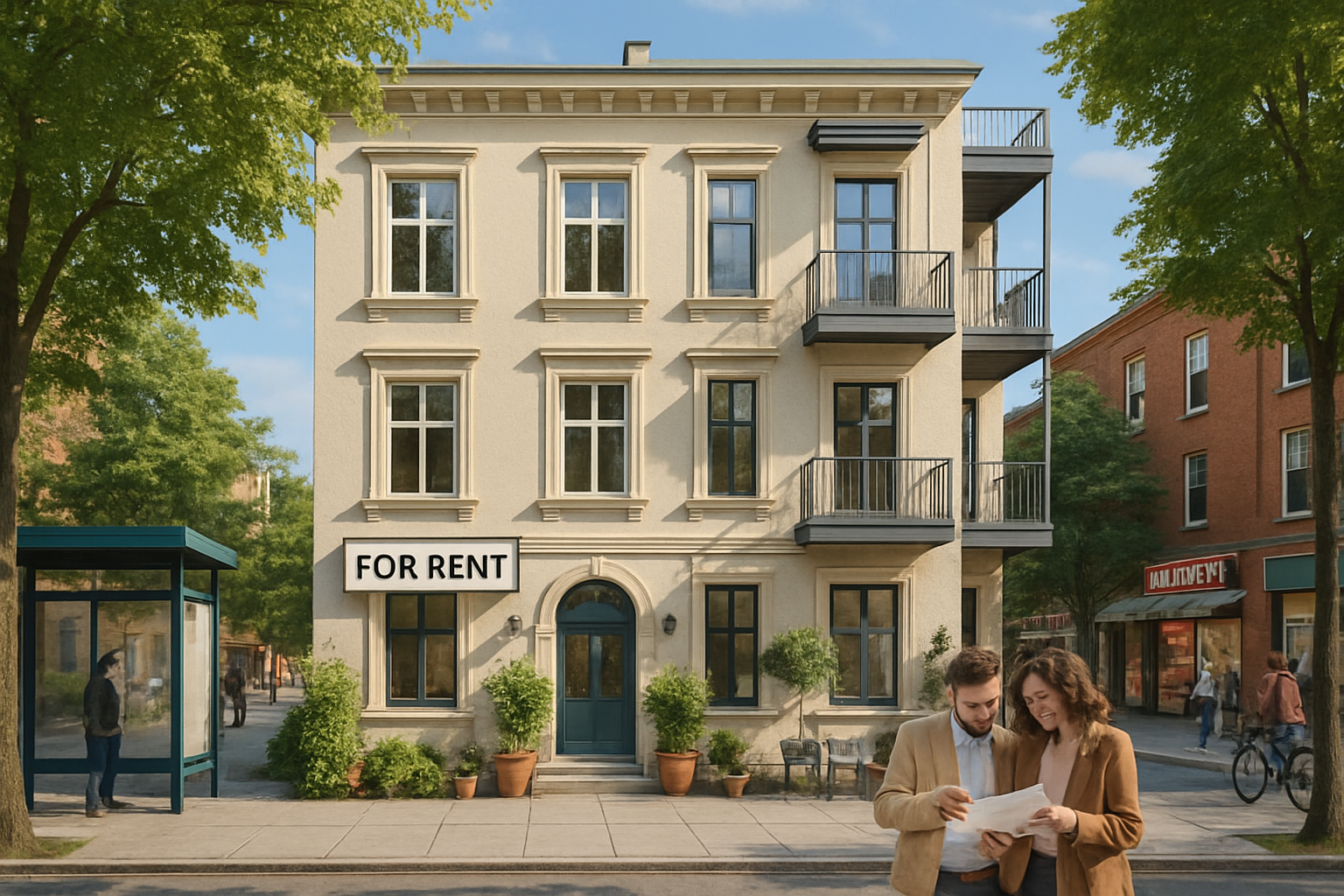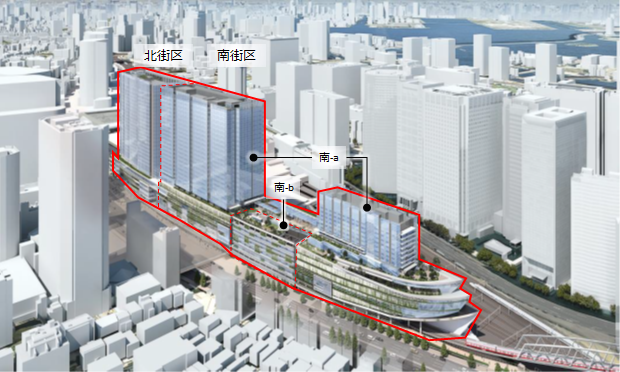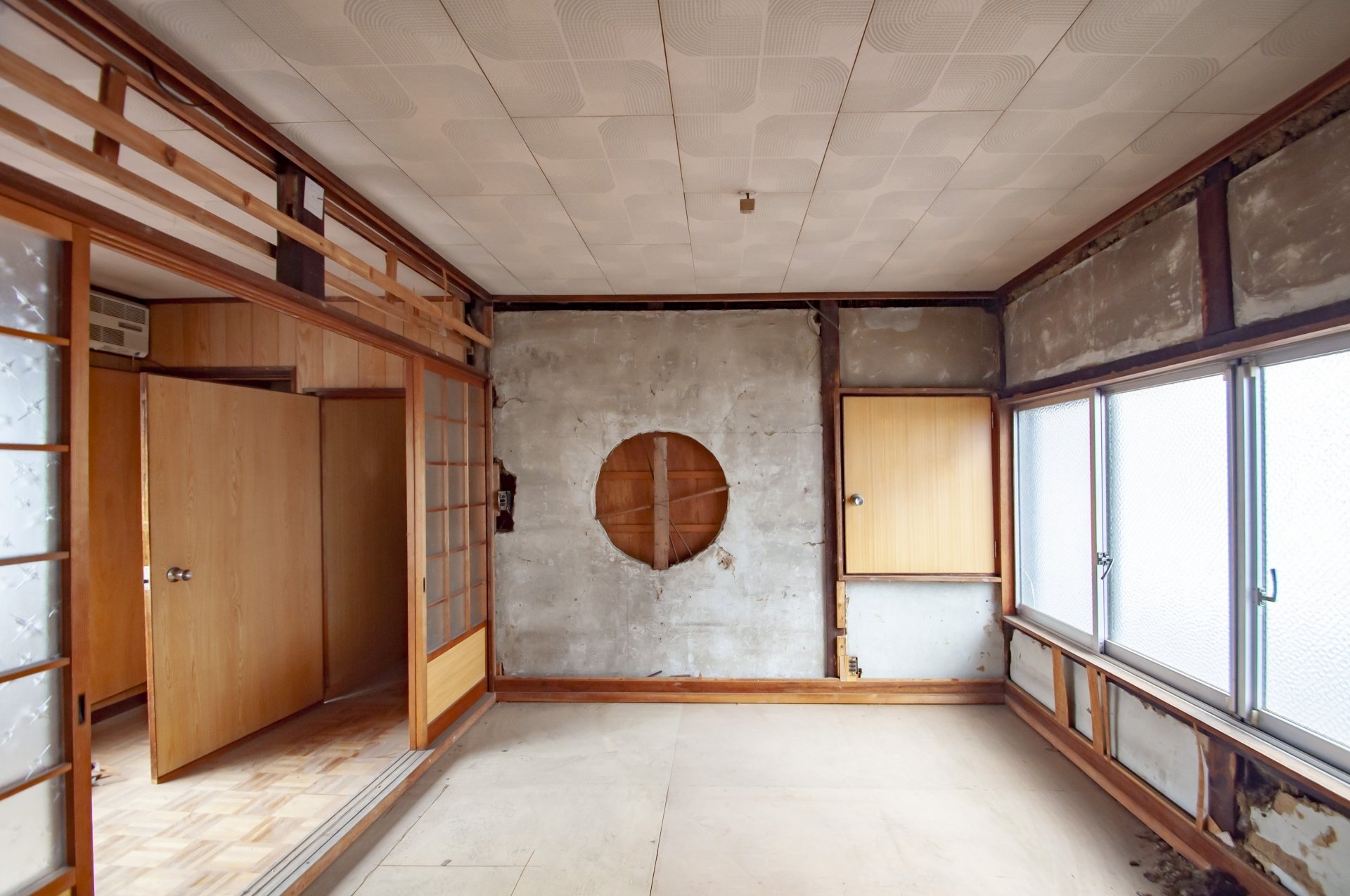In real estate transactions and investments, the most important factor is the "connoisseur's ability" to accurately determine the value of a property. However, many ordinary investors and prospective buyers are faced with the basic question, "How can I determine a fair price? Unlike stocks and bonds, real estate requires specialized knowledge and methods to evaluate it because there are no identical instruments and there is little price transparency.
In fact, in the course of my consulting work, I have seen many clients purchase a property simply because it is cheaper than the surrounding market price, only to be disappointed later when they realize that it is not worth as much as they expected. In order to avoid such mistakes, it is essential to understand and properly utilize the three major methods ofreal estate valuation practiced by professionals.
In this article, we will explain the three major valuation methods that we, real estate professionals, utilize on a daily basis: the cost method, the transaction case comparison method, and the capitalization method. We will explain their characteristics, calculation methods, and how to properly use them from an expert's perspective in an easy-to-understand manner. By understanding these methods, you will be able to acquire a "professional's eye" to recognize the true value of real estate.
Fundamentals of Real Estate Valuation
Why accurate real estate valuation is important
Real estate is the biggest purchase of many people's lives and an important asset allocation destination for investors. However, if you make a mistake in judging its value, you face the following risks
- Overpayment due to over valuation: If you buy at a higher price than it is actually worth, the difference is simply a loss.
- Lost Opportunities Due to Undervaluation: If you underestimate the value of a property, you may miss out on a good deal.
- Erroneous investment decisions: In the case of income-producing properties, a misvaluation can result in a failure to achieve the expected return.
- Difficulty selling in the future: If you did not purchase the property at fair value, you risk incurring a loss when you sell it in the future.
This is why having agood eye for property values is an essential skill for both the average buyer and investor.
Difference between general and professional valuation methods
There are two main methods for judging the value of real estate: "general methods" and "professional methods.
| Types of valuation methods | Characteristics | Typical Method |
|---|---|---|
| General method | Methods that can be performed by general consumers in a simplified manner | Confirmation of market price on a real estate portal site Comparison with surrounding housing Simple appraisal request to a real estate company |
| Professional method | Methods used by professionals such as real estate appraisers | Cost method Transaction case comparison method Income Capitalization Method |
While general methods are easy to use, they lack precision and often do not adequately reflect the individual characteristics of the property. On the other hand, specialized methods require time-consuming calculations and information gathering, but they enable more accurate property valuations.
Summary Comparison of Three Major Valuation Methods
In the world of real estate appraisal, three basic valuation methods have been established: the cost method, the transaction case comparison method, and the capitalization method. The characteristics of each are summarized in the table below.
| Valuation Method | Basic Concept | Suitable property types | Major Situations of Utilization |
|---|---|---|---|
| Cost method | Value is calculated from the cost of re-procuring the property | New and recently constructed properties Special buildings Properties with low substitutability |
Building valuation Special property valuation Insurance valuation |
| Transaction Case Comparison Method | Value is calculated based on transaction prices of similar properties | General housing Condominiums Standard commercial properties |
Residential transactions General real estate transactions Collateral Valuation |
| Income Capitalization Method | Value is calculated based on future income from the property. | Rental condominiums and apartments Office buildings Retail properties |
Investment property valuation Decision to purchase income-producing properties Business Property Valuation |
Each of these three methods evaluates real estate values from different perspectives and must beused appropriately depending on the characteristics of the property and the purpose of the evaluation. Real estate appraisers use a combination of these methods to provide more accurate valuations.
Let us now delve into the details of each valuation method.
Cost Method - a valuation method that accurately ascertains the value of a building
The cost method, as the name implies, is a method to determine the value of real estate from a "cost (cost)" perspective. Simply put, the value is calculated from the perspective of "how much would it cost if the property were to be newly constructed or developed today?
Basic Concept of the Cost Method
The cost method divides the value of real estate into "land value" and "building value. The land is assumed not to depreciate, and the value of the building portion is adjusted for depreciation due to age-related deterioration.
The formula is as follows.
Real estate value = Land value + Building value
Building value = Replacement cost × (1 - depreciation adjustment ratio)
The "replacement cost" here is the cost of constructing a new equivalent building at this time. And "depreciation adjustment rate" refers to the rate of decrease in value that takes into account the building's age and deterioration over time.
Calculation Methods and Examples of Cost Approach
[Calculation Procedure
- Land valuation: Calculate the value of the land portion using the transaction case comparison method, etc.
- Calculate the replacement cost of the building: Calculate the cost of new construction based on the structure, size, grade, etc. of the building.
- Calculate the depreciation adjustment: Calculate the depreciation adjustment rate based on the age of the building and its state of deterioration.
- Calculate building value: Apply depreciation adjustments to replacement cost
- Comprehensive valuation: Combine land value and building value
Specific examples of calculations
For example, let's consider a case where the value of a 10-year-old wooden detached house (total floor area: 100m2) is evaluated using the cost method.
| Item | Value | Calculation |
|---|---|---|
| Land area | 120 sq.m. | -1.5m² |
| Unit price of land | 200,000 yen/m2 | -200,000 yen per sq.m. |
| Land value | 24,000,000 yen | 120m2 × 200,000 yen/m2 |
| Building Structure | Wooden construction | -Wooden construction |
| Total building floor area | 100 sq.m. | -Total floor area 100 sq.m. |
| Unit price of construction | 250,000 yen/m2 | -Reproduction cost |
| Replacement cost | 25 million yen | 100m2 × 250,000 yen/m2 |
| Statutory useful life | 22 years (wooden structure) | -22 years (wooden) |
| Lapsed years | 10 years | -10 years |
| Depreciation Adjustment Rate | Approx. 45.5 | 10 years ÷ 22 years |
| Building value after depreciation adjustment | 13,625,000 yen | 25,000,000 yen × (1 - 0.455) |
| Total real estate value | 3,762.5 million yen | 24,000,000 yen + 13,625,000 yen |
In this example, a 10-year-old wooden house, the land value was calculated to be 24,000,000 yen and the building value was calculated to be 13,625,000 yen, resulting in an overall property value of 37,625,000 yen.
Situations in which the cost approach is applied and its merits and demerits
Applicable Situations
- Valuation of newly built or recently constructed properties
- Buildings with special uses (e.g., factories, specially designed facilities)
- Valuation of properties with low substitutability
- As a basis for insurance valuation, such as fire insurance
[Benefits
- Objective evaluation of physical value: Easy to quantify the physical value of a building
- Can be used for special properties: Can be used to value properties that have few similar transactions in the market
- Strengths in building valuation: Capable of accurately evaluating the value of the building itself
Disadvantages
- Weak reflection of marketability: May deviate from actual market value
- Does not take profitability into account: Does not include income such as rental income in the valuation
- Subjectivity of depreciation adjustment: Subjectivity is often involved in setting useful life and calculating depreciation rate.
Although the cost method is an important method especially inbuilding valuation, it is advisable to use it in combination with other valuation methods to achieve more accurate valuation, rather than to judge only by its results.
Transaction Case Comparison Method - Valuation method to know the "prevailing price" in the market
The "case study comparison method" is a method to evaluate the value of a subject property based on "case studies" that have actually been traded in the real estate market. This method is widely used as the most practical valuation method that reflects actual market conditions.
Basic Concept of the Transaction Case Comparison Method
The basic concept of the "case study comparison method" is to derive the value from the market reality of "how much similar properties are traded in the market". Multiple examples of transactions of properties with similar conditions (location, size, age, etc.) to the subject property are collected, and the value is calculated while adjusting (correcting) for differences with the subject property.
This method is also called the "market approach," and its greatest feature is that it enables valuation based onactual market trends.
Calculation Method and Examples of the Market Approach
Calculation Procedure
- Collecting transaction examples: Collect multiple transaction examples of properties similar to the subject property.
- Circumstances correction: Correct for the impact of special circumstances (e.g., sudden sales, transactions between related parties, etc.) on the price.
- Time correction: Correct for changes in market conditions due to time differences between the time of the transaction and the time of valuation
- Regional factor comparison: Corrects for differences in location, environment, convenience, etc.
- Comparison of individual factors: Corrects for differences in property characteristics (size, age, facilities, etc.)
- Calculation of value: Derive the value of the subject property from multiple cases after correction
Specific Calculation Example
Let's consider an example of evaluating the value of a condominium (70m2, 15 years old) by using the transaction case comparison method.
[Transaction example
| Example | Transaction Price | Area | Age of building | Station distance | Transaction period | Special note |
|---|---|---|---|---|---|---|
| Case A | 36 million yen | 75 sq.m. | 12 years | 8 min. walk | 6 months ago | Normal Transaction |
| Case B | 33 million yen | 65 sq.m. | 18 years | 5 min. walk | 3 months ago | Normal Transaction |
| Case C | 30 million yen | 70 sq.m. | 16 years | 10 min. walk | 1 month ago | Sale by inheritance |
| Correction items | Case A | Case B | Case C |
|---|---|---|---|
| Circumstances correction | 1.00 | 1.00 | 1.05 (due to inherited sale) |
| Correction at time of sale | 1.02 (6 months ago) | 1.01 (3 months ago) | 1.00 (1 month before) |
| Area correction | 0.97 (75 sq.m. to 70 sq.m.) | 1.03 (65 sq.m. to 70 sq.m.) | 1.00 (same as above) |
| Age correction | 0.98 (12 years to 15 years) | 1.01 (18 years to 15 years) | 1.00 (almost the same) |
| Distance from station | 1.00 (Equal) | 0.98 (Superior→Equal) | 1.02 (inferior to equal) |
Calculation of Adjusted Value
| Example | Calculation Process | Adjusted Value |
|---|---|---|
| Case A | 36,000,000 yen × 1.00 × 1.02 × 0.97 × 0.98 × 1.00 | 34.94 million yen |
| Case B | 33,000,000 yen × 1.00 × 1.01 × 1.03 × 1.01 × 0.98 | 33.9 million yen |
| Case C | 30 million yen × 1.05 × 1.00 × 1.00 × 1.00 × 1.00 × 1.02 | 32.13 million yen |
From these three cases, the value of the subject property can be evaluated to be approximately 33 million yen to 35 million yen. Assuming the final appraised value to be 33.5 million yen, the unit price would be approximately 479,000 yen per square meter.
Situations in which the Transaction Case Comparison Method is applied and its merits and demerits
Applicable Situations
- Valuation of general residences and condominiums
- Valuation of commercial facilities and office buildings with high tradability
- Verification of the validity of sales prices
- Evaluation of collateral for bank loans
Merits
- Reflects market reality: Appropriately reflects market value because it is based on actual transactions
- Easy to understand: Easy to understand because the valuation is based on an intuitive method of comparison.
- Clear Basis for Pricing: Easy to explain because it is based on actual transactions.
Disadvantages
- Difficulty in obtaining good quality examples: It may be difficult to obtain a sufficient number of similar examples.
- Subjectivity of correction: Professional judgment and subjectivity are often involved in setting various correction coefficients.
- Limitations of application to special properties: Difficult to apply to special properties with few transactions in the market.
The case-case comparison method is considered the most reliable valuation method, especially forgeneral real estate transactions, but it requires the acquisition of high quality case-case data. Professional real estate appraisers and real estate companies use their own databases and information networks to conduct highly accurate valuations.
Income Capitalization Method - A method to evaluate the "earning power" of investment real estate
The Income Capitalization Method is a method of evaluating the value of real estate based on future earnings from the property. It is the most important method for evaluating investment properties, and is widely used as abasis for real estate investment decisions.
Basic Concept of Income Capitalization Method
The essence of the Income Capitalization Method is the idea that "the value of real estate is the sum of the present value of the future earnings that the real estate will generate. In other words, the value of a property is calculated by discounting the net income (i.e., the income from rents, etc. minus expenses) by an appropriate yield.
There are two main methods used in the capitalization method: the direct capitalization method and the DCF method (discounted cash flow method).
- Direct Capital ization Method: The value is calculated by dividing the standard net income for a single year by the capitalization rate.
- DCF method: A method that forecasts earnings for multiple years and then discounts the net earnings for each year to arrive at a total present value.
Income Capitalization Method Calculation Method and Examples
Direct Capitalization Method Calculation Procedure
- Calculation of annual gross income: Calculate based on rental income when the property is fully occupied.
- Deduction of vacancy loss: Subtracting an appropriate vacancy rate
- Deduct operating expenses: Subtract management fees, repair expenses, property taxes, insurance premiums, etc.
- Calculate annual net income: Subtract total expenses from total income
- Set the capitalization rate: Consider the property's risk and potential
- Calculate property value: Net income divided by capitalization rate
Calculation Procedure for the DCF Method
- Projection of future income and expenditure: Project income and expenditure for multiple years (usually 5 to 10 years)
- Set discount rate: Consider capital cost and risk premium
- Calculate the discounted present value of each year: Discount the net income for each year to the present value.
- Reversion price calculation: Estimates the sale price at the end of the projection period and converts it to present value
- Overall evaluation: Sum the present value of the entire period
Specific Calculation Examples - Direct Capitalization Method
The following is an example of evaluating the value of a 10-year-old rental condominium (20 units) using the direct capitalization method.
| Item | Amount | Remarks |
|---|---|---|
| Assumed annual gross income | 24 million yen | 100,000 yen per month x 20 units x 12 months |
| Vacancy loss | -2.4 million yen | Assuming 10% vacancy rate |
| Effective gross income | 21.6 million yen | -1.6 million yen |
| Management fee | -1.08 million yen | 5% of effective gross income |
| Repair expenses | -2.16 million yen | 10% of effective gross income |
| Taxes and public dues | -1.5 million yen | Property tax, city planning tax, etc. |
| Other expenses | -648,000 yen | Insurance premiums, renewal costs, etc. (3%) |
| Total annual cost | -538,000 yen | -5,388,000 yen |
| Annual net income | 16,212,000 yen | Effective gross income - Total expenses |
| Capitalization Rate | 6.0% (based on location, building value, and property characteristics) | Set based on location, age, and property characteristics |
| Property Value | 207,020,000 yen | 16,212,000 yen ÷ 0.06 |
In this example, the property value was evaluated at approximately 207,020,000 yen based on the calculation assuming an annual net income of 16,212,000 yen and a cap rate of 6.0%.
Situations in which the Income Capitalization Method is applied and its advantages and disadvantages
Applicable Situations
- Valuation of rental condominiums and apartments
- Valuation of office buildings and commercial facilities
- Investment property purchase decisions
- Valuation of REIT (Real Estate Investment Trust) properties
Advantages
- Directly linked to investment decisions: Directly reflects the profitability of investment properties
- Consideration of future potential: Future earning capacity can be incorporated into the valuation.
- Profit-based evaluation: Optimal for investment decisions because "earning power" can be quantified.
Disadvantages
- Uncertainty of forecast: Uncertainty in setting future income and cap rate
- Expertise required: Expertise is required to make appropriate cost assumptions and to set cap rates.
- Impact of market fluctuations: Valuation results are affected by changes in the interest rate environment and the real estate market.
The income capitalization method is widely used as the most important method of valuation, especially forinvestment properties. However, since the setting of the capitalization rate has a significant impact on the appraisal value, setting an appropriate rate of return determines the accuracy of the valuation. Professional real estate investors and real estate appraisers set appropriate cap rates by comprehensively judging the characteristics of the subject property and market trends.
How to choose and use the valuation methods practiced by professionals
We have discussed the three major valuation methods in detail, but how do professional real estate appraisers and investors select and utilize these methods? From here, I will explain how to select and use professional valuation methods based on my practical experience.
Optimal Valuation Methods by Property Type
Different property types require different valuation methods to be focused on. Below is a summary of the basic policy for selecting a valuation method for each property type.
| Property Type | Primary Valuation Method | Auxiliary Valuation Method | Reason |
|---|---|---|---|
| General Residential | Transaction Comparison Method | Cost method | Market transaction prices are the most reliable for residential properties |
| Condominiums | Transaction case comparison method | -Cost method | Comparable cases are abundant and easy to compare |
| Apartments for rent and condominiums |
Income Capitalization Method | Transaction Case Comparison Method | Because profitability is the essence of value |
| Office buildings and Retail properties |
Income Capitalization Method | Transaction Case Comparison Method | Profitability is most important for business assets |
| Factories and special buildings | Cost method | Income Capitalization Method | Low substitutability, construction cost reflects value |
| Vacant land and residential land | Case Comparison Method | -For land, examples of transactions in similar areas are used as reference | Land is referenced by transactions in similar areas |
As described above, thebest combination of valuation methods depends on the use and characteristics of the property. In professional valuation, these methods are used appropriately or in combination to achieve a highly accurate valuation.
Techniques for Combining Multiple Valuation Methods
In actual real estate appraisal, not only a single valuation method is used, but also a combination of multiple methods is used to achieve a more accurate valuation. Below are some of the techniques used by professionals to combine valuation methods.
1. triangulation (verification by combining three methods)
This is a method in which the prices calculated by each of the three valuation methods are compared and examined to make a final value judgment. For example, the valuation results are organized as follows.
| Valuation Method | Valuation Value | Confidence Level | Adoption Ratio |
|---|---|---|---|
| Valuation based on cost method | 85 million yen | Medium | 30% of the total |
| Value based on the transaction case comparison method | 92 million yen | High | 50% (value based on the |
| Value based on Income Capitalization Method | 88 million yen | Middle | 20% (based on the income capitalization method) |
| Final appraised value | 89.2 million yen | -100 | 100% of |
In this example, each assessed value is weighted according to the confidence level, and the final assessed value is calculated as a weighted average.
2.Combination of DCF method and direct capitalization method
When valuing income-producing properties, the Direct Capitalization Method from a short-term perspective and the DCF Method from a long-term perspective are used together to achieve a more accurate valuation.
Final appraisal value = Value based on DCF method × 60% + Value based on direct capitalization method × 40%
This ratio will be adjusted according to property characteristics and market conditions. For properties that are expected to generate stable income, the ratio of the direct capitalization method will be increased, while the ratio of the DCF method will be increased for properties that are expected to fluctuate in the future.
Adjustment based on area characteristics
It is also important to adjust the valuation results according to the characteristics of the area. For example:
- Population growth areas: Increase the base valuation by 5-10%, based on the expectation of future value increases.
- Areas scheduled for redevelopment in front of train stations: Increase by 10-15%, taking into account the effects of infrastructure improvements.
- Areas with declining population: Decrease by 5-10%, taking into account the risk of a future decline in value.
The value will be adjusted to take into account the future potential of the area, such as the following
Professional's Point of View: Points Often Overlooked
Finally, here are some key points of real estate valuation that are often overlooked by the general public. These are important factors that real estate valuers are always on the lookout for.
1. checking legal restrictions
The value of real estate can be greatly affected by legal restrictions. Particular attention should be paid to the following
- Zoning, building-to-land ratio, and floor-area ratio: These restrictions affect the possibility of future rebuilding or expansion.
- Road access: The value of properties that cannot be rebuilt will be significantly reduced.
- Existing non-conformity: Buildings that do not conform to current laws may be subject to future restrictions.
Infrastructure and development plans
Future changes in the surrounding environment can have a significant impact on property values.
- Planned urban roads: If there are plans to widen the front road, setbacks will be required in the future
- Large-scale development plans: Redevelopment plans in the surrounding area may increase property values.
- Plans to open a new station: Improved access to transportation will lead to a marked increase in value
3. building quality and maintenance condition
In addition to the surface beauty of the building, the condition of the structure and facilities is also an important evaluation point.
- Structural soundness: Seismic performance and structural defects are not present.
- Facility renewal status: renewal history and current status of water supply and drainage pipes and electrical equipment
- History of major repairs: For condominiums, the status of the repair reserve fund and repair history
4. real yield on income-producing properties
For investment properties, it is essential to check not only the surface yield but also the real yield.
- Vacancy risk: Relevance compared to surrounding vacancy rates
- Risk of falling rents: Rent trends in the area and future outlook
- Realistic repair and maintenance costs: Are actual repair and maintenance costs expected?
5. market liquidity and exit strategy
Since real estate is an illiquid asset, the possibility of future sales must be included in the valuation.
- Buyer base: How many potential buyers can be expected?
- Ease of resale: is the property in general or specific demand?
- Future marketability: future demand is predicted based on demographics and development plans.
These perspectives are critical in determining the intrinsic value of aproperty, which cannot be expressed in a simple formula. Through this multifaceted analysis, real estate appraisers are able to make more accurate value judgments.
In summary, the three major valuation methods are utilized to determine the optimal real estate value.
Let us summarize the key points of the three major real estate valuation methods explained so far.
-
Cost method: A method that calculates value based on the replacement cost of a property
- Strengths: Clearly assesses the physical value of the building
- Weaknesses: Does not directly reflect marketability or profitability
- Best Use: Valuation of new and recently constructed properties and special buildings
-
Case Comparison Method: Calculates value based on transaction prices of similar properties
- Strengths: Directly reflects actual market conditions and allows empirical valuation
- Weaknesses: Prerequisite of obtaining appropriate comparable properties
- Best Use: Valuation of standard properties such as houses and condominiums
-
Income Capitalization Method: Calculates value based on future earnings
- Strengths: Can be used to evaluate profitability directly related to investment decisions
- Weaknesses: Uncertainty in future projections and difficulty in setting capitalization rates
- Best Use: Valuation of investment and commercial real estate
These methods complement each other's weaknesses. In order to determine the true value of a property, it is important toappropriately combine multiple valuation techniques. By selecting and weighting the most appropriate valuation methods according to the characteristics of the property, more accurate value judgments can be made.
In addition to these formal valuation methods, comprehensive consideration of factors such as the surrounding environment, future potential, and legal restrictions is the key to professional real estate valuation.
Real estate is many people's greatest asset and an important investment destination for investors. We hope that understanding and utilizing the valuation techniques described in this article will help you make wiser real estate purchases and investment decisions.
Frequently Asked Questions
Q1: Can an ordinary person perform some real estate valuation?
A. Yes, it is possible. As a simplified version of the transaction case comparison method, you can get some idea by checking similar property prices on real estate portal sites and using public information such as the Ministry of Land, Infrastructure, Transport and Tourism's "Comprehensive Land Information System. However, more accurate evaluation requires specialized knowledge and databases, so we recommend consulting with a specialist when making important decisions.
Q2. Which of the three major real estate valuation methods is the most reliable?
A. It depends on the type of property and the case. The transaction case comparison method is appropriate for general housing and condominiums, the income capitalization method for investment properties, and the cost method for special buildings. The important thing is to choose the appropriate valuation method for the property's characteristics or to verify with multiple methods. Ideally, one should not rely solely on a single valuation method, but rather evaluate from multiple perspectives.
Q3: What is the difference between a valuation by a real estate appraiser and one by a real estate company?
A. Valuation by a real estate appraiser (appraisal) is a fair and neutral valuation performed by a nationally licensed professional in accordance with real estate appraisal standards. On the other hand, an appraisal by a real estate company provides a practical guide to possible sales prices, and may reflect the company's sales policy and market strategy. Appraisals tend to focus on rigor and neutrality, while appraisals tend to emphasize marketability and feasibility. Both perspectives should be consulted when making important decisions.
Q4: How do I determine the appropriate capitalization rate under the Income Capitalization Method?
A. The cap rate is determined by comprehensively judging the following factors
- Location (urban or suburban)
- Property type (condominium, office, retail, etc.)
- Building age and building grade
- Actual transaction yields in the surrounding area
- Financial market trends (interest rate levels, etc.)
- Risk premium (individual risk of the property)
Generally, lower yields are applied to lower-risk prime properties (e.g., in the 3% range for a prime office in the city center) and higher yields are applied to higher-risk properties (e.g., in the 8% range for an old apartment building in the suburbs). Since this is an area that requires professional judgment, we recommend that you seek the advice of an expert with practical experience.
Q5. How has the evolution of digital technology affected real estate valuation?
A. Digital technology is revolutionizing real estate valuation. The use of big data and AI is making it possible to make precise price predictions based on vast amounts of transaction data. In addition, the quantification of location conditions using GIS systems and the advancement of property previews using VR are also advancing. However, since the essence of real estate valuation is to determine the value of highly individualized assets, digital technology should be used only as a tool, and the knowledge of experts remains important in making the final decision.
Reference Information
- Ministry of Land, Infrastructure, Transport and Tourism, "Real Estate Appraisal Standards
- Real Estate Appraisal Guidelines" by the Japan Association of Real Estate Appraisers
- Ministry of Land, Infrastructure, Transport and Tourism "Comprehensive Land Information System
- Real Estate Transaction Price Information" by Real Estate Information Center
- Real Estate Investor Survey" by Japan Real Estate Institute
Source: "Real Estate Appraisal Standards", Ministry of Land, Infrastructure, Transport and Tourism. https://www.mlit.go.jp/common/001037632.pdf
Accurately identifying the value of real estate is an important factor in determining the success of a purchase or investment. Understanding the three major valuation methods introduced in this article and selecting the appropriate method for each property will help you make wiser real estate decisions.
If you need professional advice regarding your real estate transaction or consultation, please contact INA & Associates, Inc. Our extensive experience and expertise will assist you in making the best real estate decisions.

Daisuke Inazawa
Representative Director of INA&Associates Inc. Based in Osaka, Tokyo, and Kanagawa, he is engaged in real estate sales, leasing, and management. He provides services based on his extensive experience in the real estate industry. Based on the philosophy that “human resources are a company's most important asset,” he places great importance on human resource development. He continues to take on the challenge of creating sustainable corporate value.

.png)













